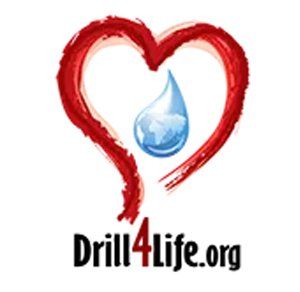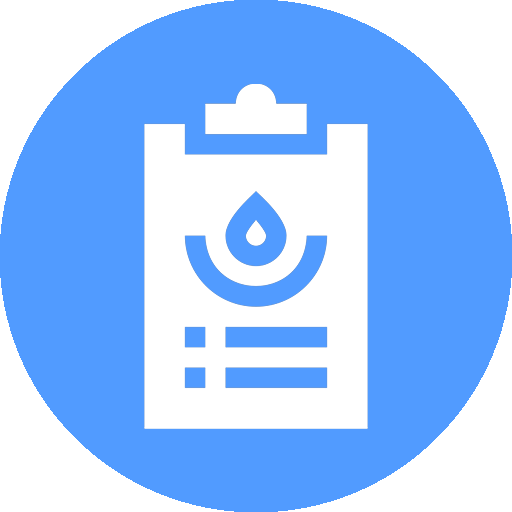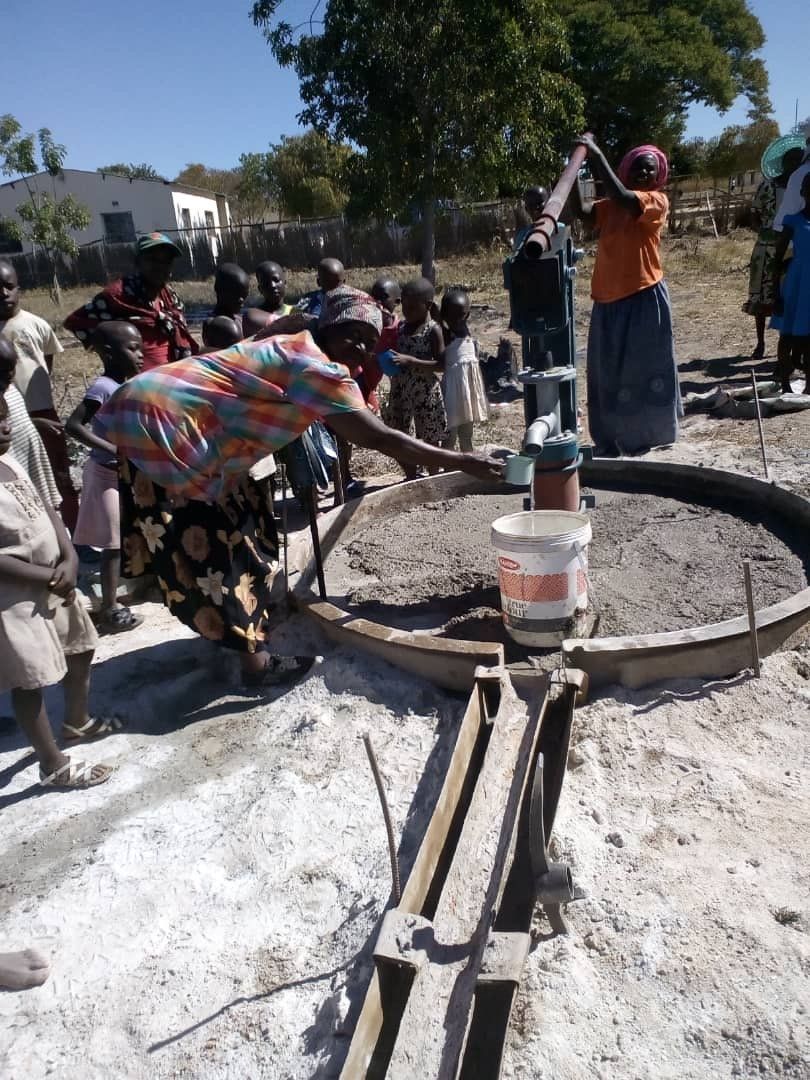The Drill4Life Story
Chapter 1: ‘Everything Begins with an Idea’
Co-founder Simba Maswela was born & raised in Zimbabwe and immigrated to the United States in 2002. In 2011, he met Stacey Lambright, who had contracted Sim’s cleaning service. The two quickly became friends & rest is history. This is the story of how Drill4Life came to be, in their own words:
Stacey: I first met Simba in the summer of 2011, when I responded to a Craigslist ad, while searching for a company to clean the carpeting in my home. Something in his voice inspired trust in me and soon, there he stood at my door; with a handheld carpet cleaning machine in one hand and a Million Dollar Smile on his face. It wasn’t long before we were deep in conversation; he talking about his tiny village of Rushinga in Zimbabwe and me, listening in fascination to the story of his life
Simba: I am the second to last of eleven children, three of whom had died from the AIDS virus. At that time, I was the only member of my family here in the United States and I was solely responsible for taking care of many nieces and nephews back home. I worked very hard to send money back home to take care of my family. At times, I even found myself faking illnesses so that I could send much needed medications to my mother back in Zimbabwe. It’s hard for most Americans to understand what it’s like to watch children die of illnesses that would not be serious to children in the United States. But when your water sources and subsequent food sources are tainted, your immune system cannot fight off even mild sickness.
Stacey: The cleaning appointment had turned into hours, but I knew within the first few minutes of our conversation that I had made a lifelong friend. Simba had left his own large and loving family behind in Zimbabwe in order to come to America in order to provide for them; that in and of itself broke my heart. I couldn’t imagine the pain and the courage it took to move to a foreign land, leaving behind all that is familiar to take a chance on a dream. It broke my heart to learn that his son, who was the same age as my son, was less than a year old when head left Zimbabwe. I knew right then that I had to do something — Now — to help my new friend’s family! But more than that, I felt compelled in my spirit to try and find a way to help his entire village.
Simba: From that day forward Stacey and I were friends. She single-handedly changed my entire life! Every chance she could, she would refer me to her friends and family members for work. Stacey called me the hardest worker that she’d ever met, and I was grateful to have steady work that allowed me to take care of myself and my family back home.
Stacey: I was overjoyed when Simba was finally able to bring his family to the United States to live with him. His son, Cay, and my son, James, became instant friends. I remember taking Cay to his first big arcade and being amazed just watching him and seeing his excitement.
Simba: In August of 2012, I was finally able to go back to my home village in Zimbabwe and visit the rest of my family and friends. Zimbabwe is no stranger to drought, but what I found was a land devastated by years of dry skies and scorched earth. Children were sick and dying not only from diseases caused by the lack of fresh, clean water, but also due to hunger & lack of food. What little livestock that was left was skin and bones; barely alive themselves and unable to work the land. I was so distraught and upset that I immediately messaged Stacy to tell her of the horrible conditions I was seeing in the land of my birth. I had to do something to help.
Stacey: I was beside myself trying to think of ways to get help to the village. I got on the phone and began talking to business contacts, friends and family members. Every time Simba texted me or sent photos from his village my heart broke just a little bit more. I wracked my brain trying to come up with solutions.
Simba: I needed to experience, firsthand, the journey that my family members and the other villagers endured each and every day to provide our village with water. On the first day, we walked about seven miles one way through a barely passable path filled with rocks and brush. The oxen we led on that journey were so weak and frail it seemed they could fall over dead at any moment. When we reached our destination, it was not a creek but a dried bed where the villagers had dug a wide hole that was 15 feet deep. Although there was no scaffolding or bracing to hold the sand back, villagers were risking their lives by descending into this dangerous abyss.
Stacey: I couldn’t believe what I was seeing on the video. To say that I was shocked would be an understatement. Through my tears, I watched as villagers painstakingly used a large metal drum to separate the water from the sand at the bottom of the pit. Then one cup at a time, they put the water into a bucket that went from hand to hand until it reached the surface.
Simba: I could barely contain my sorrow. This is what my people did every single day to bring water back to the village. Not clean or fresh water. Not even purified water. This water was just as likely to bring about death as it was to sustain life. And they told me that it was never enough! They couldn’t even bring back enough water to drink and bathe, let alone to water the crops and give to the animals. My village needed a better source of water or people would not be able to survive. They needed a water well.
Stacey: The idea to hold a fundraiser to raise money for a Borehole (water well) for the village was the only logical way to proceed. Because of my contacts in the community, I knew we could raise the money but we needed to find a non-profit organization to do the work. I spent more than a year trying to partner with several organizations that gave us false hopes and either over promised or under delivered. Finally, we made the decision that the only way to get this project completed, the way we wanted, was to start our own non-profit agency. Thus, in January of 2014, Drill4Life was born!
Chapter 2: ‘Drill4Life is Born- the 1st Borehole’
For one full year, the Drill4Life team and Board of Directors raised money and positioned the organization for its first project. After the site was chosen, local villagers worked for 3 weeks clearing brush so that the drilling rigs were able to access the drill site. After months of preparation, drilling commenced on July 13, 2014.
Stacey: My plane had just landed for a layover in Atlanta. As I walked through the airport my phone alerted me with an urgent message. It was from Simba. My heart skipped a beat when I read the simple text: “Stacey, call me. We have a problem”.
Simba: After all of the work we’d put in; after all of the clearing and digging that hundreds of volunteers and villagers from across the region had performed; after all the money that had been raised for the drill; I heard the words that tore into my heart, “We’ve hit a dry hole”.
Our team back in America was devastated. The villagers and volunteers were heartbroken. So much hard work had gone into making this water well a reality, and there was still no fresh water for Rushinga. A dry hole is a rare occurrence but we certainly had one on our hands. There was sorrow on two continents. The villagers were openly and tearfully in mourning and there was nothing we could do but pray. The drilling contractors don’t guarantee they will hit water. They get paid whether the drill is successful or not. So, not only did we have a dry hole, we did not have the funds to drill another one.
Stacey: Time was of the essence, so we called an emergency phone conference with both teams; America and Zimbabwe, at midnight. It was time to figure out our next steps. The call began with a mixture of disappointment & anger and then quickly turned to disbelief! How could we have not foreseen the possibility of a dry hole? The situation felt hopeless, but I asked the drilling contractor one simple question: What are our options? Brian, our contact with the contractor (Tandamanzi Drilling) paused and then said, "On your word, and in writing, if you promise to cover the cost of next borehole, we will try again."
My stomach was in my throat. I felt sick. It was almost 2 AM in the morning and I needed some time to think. I had a huge decision to make. We still owed $3,000 dollars on the current dry well. Could I seriously commit to an IOU for an additional $8,000 -10,000 dollars? What if we ended up with another dry hole? Do I let the rigs drive 300 miles back to the city and start the process of raising money all over again? Could our dream of providing sustainable water to this village end in failure? Everyone was waiting on MY decision. Do they take the rig back to the city or do they dig? I squeezed my eyes shut, swallowed hard and said, "Dig."
On January 6, 2015, I awoke to the insistent sound that my phone emits when someone has texted me or sent me photos. I immediately grabbed my phone and prayed for good news. As my eyes peered into the phone my heart swelled with happiness! Simba had sent me photos from Rushinga! We had hit WATER! Not only had we hit at 250 feet, we hit a very healthy vein that was capable of supplying a great deal of water for a very long time!
I can’t put into words the feeling and emotions that were bombarding me. I had gone from hopeful & optimistic about this project to disenchanted & desperate, and had come back again full circle to encouraged and upbeat; all in a 24-hour period. The closest other feeling that I can relate to when I got that wonderful news is the way I felt the day my son was born. The tears came and my facade of composure I had managed to keep during this whole process crumbled away. I found myself crying like a baby.
Simba: The casing of our borehole took a few days. Once things were complete, I sent Stacey this iconic photo that captures the kind of exhilaration and enthusiasm that only a child having her first cup of fresh, clean, uncontaminated water could get!
Stacey: This is my favorite photo from our incredible journey thus far. I keep it close to my heart and I pull it out whenever I am telling the story of Drill4Life. So, I ask you: What if this was the first time you had ever tasted a cup of fresh, clean, life-giving water? How happy would you feel?
This is the story of how Drill4Life came to be ! Thank you for taking the time to live the dream with us! The need for clean, sustainable water is without doubt one of the greatest in our world today. Join us in working to provide this essential resource with the people of Zimbabwe & sub-Saharan Africa!






